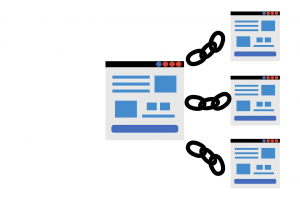Here at ArticleHub, we focus on link building, which is a key SEO tactic that will help your pages rise in the search engine rankings. But what other effective SEO techniques can you use to drive traffic to your site? We get this question a lot, so we thought we would list several SEO best practices here that are particularly effective and easy to utilize. As Google continues to tweak its algorithm to promote quality content, we made sure these techniques won’t run you afoul of Google and will continue to remain effective well into the future.
So now, let’s start our count with the 6 SEO best practices for 2023.
1. Answer Customer Questions
Here’s one that you won’t see on most lists of SEO best practices but that will help just as much with your SEO as it will to drive sales. Most prospects come to your site with a few questions in mind: Why should they choose you? Why is your offering superior to that of the competition? How much does it cost? What are the drawbacks of your product or service?
Those are just a few; undoubtedly you can think of others based on your particular niche.
Your website should strive to answer these questions directly and with a minimum of jargon or fluff. This does two things: It gives prospects a clear picture of what you offer and why they should use your product or service over the competition. You’ll get points simply for taking a no-nonsense approach and telling visitors to your site what they want to know without making them jump through hoops.
The second thing this approach does is speak to your customers in their language and thus increase your search engine ranking around the key words they typically use when they’re searching for information.
You can start the page with the very question you feel your prospects are asking. This tells Google and other search engines that your site is exactly where someone searching for those key words wants to go. This is especially effective now that people are asking these kinds of questions to voice assistants such as Siri, Alexa and Google Assistant. If yours is the first site they see, you’ve already won half the battle.
2. Properly Utilize Page Titles and Headings
Page titles and headings are one of the 6 SEO best practices for 2023. You’d be surprised at the number of sites that don’t use the HTML <head> tag’s title attribute to describe what’s on a particular page. Search engines use this information to determine how relevant a page is to a user’s search, so it’s vital that you use it effectively. Tell the visitor, and the search engine, exactly what they can expect on this page. Remember that people will typically just glance at this, so be sure to lead with the important part. Beyond that, you can stack a few key words that are also relevant to the page content.
The same goes for headings on the page itself. They’re a great way to keep your page organized, and search engines pay particular attention to their content. So, try to be as specific as you can as to what’s on the page or in a given section without getting too far into the weeds.
For instance, don’t just say “Our Solutions” or “Our Services,” but try to make it more specific to the products or services you actually sell. This is helpful to people and search engines alike and will allow your prospects to more quickly find the information they’re after.
3. Create Content Around Targeted Key Word Research
This is an oldy but a goodie. Granted, you can make educated guesses regarding what key words your visitors are using to find you, but with a plethora of free and low-priced tools available, it’s just as easy to develop your key word list using real-world data. Tools like Surfer SEO, Semrush and Ahrefs are easy to use and can provide this info in a convenient format.
Then, you’ll want to create content that’s focused on these key words. That means using them in your headings and HTML title tags while sprinkling them throughout your content. Google has long ago learned how to determine whether you’re stuffing key words just for the sake of it, so don’t even try. For one thing, Google is likely to discount your page, and for another, doing so makes your content a chore to read. You want to ensure your content is easy or even fun to read. You should also include some long tail key words, which are more specific phrases related to your niche and are more likely to be searched for by people who are serious about making a purchase.
4. Create Compelling Meta Descriptions
Did you know that the meta description tag is where Google and other search engines get the text that shows up after the name of your site in the search engine listings? Sometimes, search engines will use your page content, but that’s only if they don’t find a meta description that relates to your page content. So, if you’re looking for a spot to place an elevator pitch about your product, service or company, the meta description is it. This is another attribute of the <head> tag of each webpage.
Your meta description must be brief yet powerful, as Google will only show the first 155-160 characters. You’ll find that creating effective meta descriptions can be a challenge, but it’s also a great way to get you to think about what you offer in the most concise terms possible. Encapsulating the high points in a meta description will serve to draw in potential customers but can also serve as a springboard for you to create compelling sales content to drive prospects through your sales path.
5. Optimize Images and Page Speed
In 2021, Google introduced a concept called Core Web Vitals to help its search engine determine which pages would be quicker to load and thus provide a better user experience. Fortunately, they also released a tool called Google Lighthouse to help you as the site owner test the Core Web Vitals of your site and take steps to improve them. You’ll find it in the Dev Tools inside Google Chrome. This should be your go-to when you’re trying to make sure your site is loading as fast as it can.
One of the key components of your site that can slow down its load speed and hence cause it to fall in ranking is your images. It’s critical to ensure that your image files are as small as possible while retaining quality. Your content management system can help you optimize your images, and you can find more specialized tools on the web.
In addition, the <head> tag loads prior to all components of each page. If you have a high number of script references in your header, that can bring what would otherwise be a highly responsive website to a screeching halt. You can use Google Lighthouse to analyze your head tags and clean out anything in there that you don’t need or is otherwise slowing down your load times.
6. Utilize Internal Links
Our last count of this list of the SEO best practices is internal links. Backlinking from other sites is an effective SEO strategy, but you also don’t want to forget to link to related pages on your site. This helps Google understand how the pages on your site are related and can boost the ranking of each page while increasing the relevance of your key words when someone performs a search. In effect, you’re telling Google: “Yes, this site has loads of content relevant to what this user is searching for,” which will in turn raise the ranking of your pages for particular key words.
For instance, if your content includes concepts that a reader might not understand, link to more information on your site toward the beginning of your content. Further, instead of saying “Read This Article for more information,” say, “Learn more about <keyword>.” This lets Google know that the linked content and the source content are related. If it can’t make this determination, and it thinks you’re linking to irrelevant content, you could actually lose page ranking.
Building backlinks from external sites is equally if not more important for your site’s SEO, and at ArticleHub, quality backlinking is our bread and butter. Learn How We Can Help You Build a Better Backlink Profile.
SEO is a key component of marketing your site, and these recommendations barely scratch the surface. But they’ll give you a solid start toward optimizing your site to achieve the highest search engine ranking possible as your prospects search for you across the web.
So, are you ready to try these 6 SEO best practices to grow your business?




